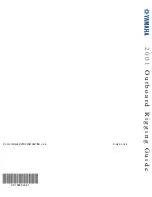
LR1110
User Manual
Rev.1.0
UM.LR1110.W.APP
March 2020
74 of 130
Semtech
For Pout = +20 dBm, VR_PA = 2.5 V is required (brown curve), which means that the High Power PA will be able to maintain
Pout = +20 dBm on the 2.7 V < VBAT < 3.7 V voltage range (2.5 V +200 mV = 2.7V). Below 2.7 V, the output power will
degrade as VBAT reduces.
At 1.8 V of supply voltage, the maximum VR_PA value is 1.6 V (1.8 V - 200 mV), allowing therefore a +17dBm output power.
Figure 9-4: High Power PA VR_PA Voltage vs.
TxPower
9.2 PA Output Power
As stated previously, two parameters do have an impact on the TX output power generated by both the Low Power and
the High Power PA: the programmed power
TxPower
and the duty cycle
PaDutyCycle.
A third parameter,
PaHPSel
, controls
the size of the High Power PA, and therefore has a direct impact on the High Power PA output power. In order to reach
+22dBm output power,
PaHPSel
has to be set to 7
.
PaHPSel
has no impact on the Low Power PA.
9.2.1 Low Power PA
Figure 9-5: Low Power PA Output Power vs. TxPower
shows the output power of the Low Power PA with
TxPower
for
different
PaDutyCycle
settings and over the supply voltage. The supply voltage has no impact on the output power, since
the Low Power PA is internally regulated. Only the
PaDutyCycle
has an influence on the Output Power. Therefore the plots
for 1.8V, 3.3V and 3.7 V are superimposed, and only the plots for 3.7V are visible.
For example:
•
TxPower
=14 and
PaDutyCycle
=0 gives +10 dBm whatever the supply voltage (1.8V, 3.3V and 3.7 V)
•
TxPower
=14 and
PaDutyCycle
=4 gives +14 dBm whatever the supply voltage (1.8V, 3.3V and 3.7 V)
•
TxPower
=14 and
PaDutyCycle
=7 gives +15dBm whatever the supply voltage (1.8V, 3.3V and 3.7 V)














































